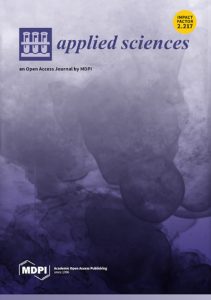Publications

Effects of tDCS on Muscle Stiffness in Children with Cerebral Palsy Measured by Myotonometry: A Preliminary Study
Authors: Małgorzata Smoter 1, Beata Jedrzejczyk-Góral 1, Aiguo Chen 2, Bogdan Ciszek 3, Zofia Ignasiak 4
Affiliations:
- Diagnostic and Rehabilitation Center ‘Promyk Słońca’, 50-088 Wrocław, Poland
- College of Physical Education, Yangzhou University, Yangzhou 225000, China
- Department of Anatomy, Medical University of Warsaw, ul. Chałubińskiego 5, 02-004 Warszawa, Poland
- Department of Biostructure, University School of Physical Education in Wrocław, 51-612 Wrocław, Poland
Journal: Open Access Journal of Applied Sciences - 2020, 10, 2616 (DOI: 10.3390/app10072616)
-
Field & Applications:
- Medical
- Neurology
- Pediatrics
- Reliability
- Treatment evaluation
Background: The aim of this study was to investigate the influence of transcranial direct current stimulation (tDCS) on the biceps brachii and flexor carpi radialis stiffness in children with cerebral palsy (CP). The authors also aimed to verify the relationship between spasticity and muscle stiffness.
Methods: Twelve children with CP (mean ± SD; age, 8 ± 1.3 years; height, 118.7 ± 4.1 cm; weight, 23.0 ± 2.2 kg) were involved in the study. Muscle stiffness was estimated using a MyotonPRO device in a MultiScan pattern of five measurements. Simultaneously, the tDCS stimulation was performed. Spasticity was assessed by a neurologist using the Ashworth Scale.
Results: Stiffness of the flexor carpi radialis muscle decreased significantly after tDCS therapy (p = 0.04). There was no significant change in stiffness of the biceps brachii. For all participants, the Spearman rank correlation showed statistically significant and positive relationships between muscle stiffness and the Ashworth Scale (p = 0.04).
Conclusions: Transcranial direct current stimulation has a decreasing effect on stiffness and spasticity of the flexor carpi radialis in children with CP. The MyotonPRO device provides objective data and correlates with spasticity measurements.
Keywords: muscle stiffness; transcranial direct current stimulation; children; cerebral palsy
Our study using tDCS therapy and the myotonometry measuring technique provides important information about the influence of tDCS on muscle stiffness reduction in children with CP. A decrease in muscle stiffness has implications for design of the rehabilitation process.
MyotonPRO appears to be a reliable assessment tool. Moreover, it provides objective data and correlates with spasticity measurements. Therefore, stiffness might be considered a new parameter in the supervision of clinical changes in cerebral palsy.
Additional research on a larger group of CP patients and on other body regions is clearly needed. To support our hypothesis and to increase our experimental results, pediatric professionals could consider incorporating tDCS therapy, with due attention and control, in rehabilitation programs for decreasing spasticity.
Myotonometry is becoming increasingly popular in assessing the viscoelastic properties of muscles, both before and after applying physiotherapy treatment [12]. It is non-invasive, portable, and easy to administer [13].


